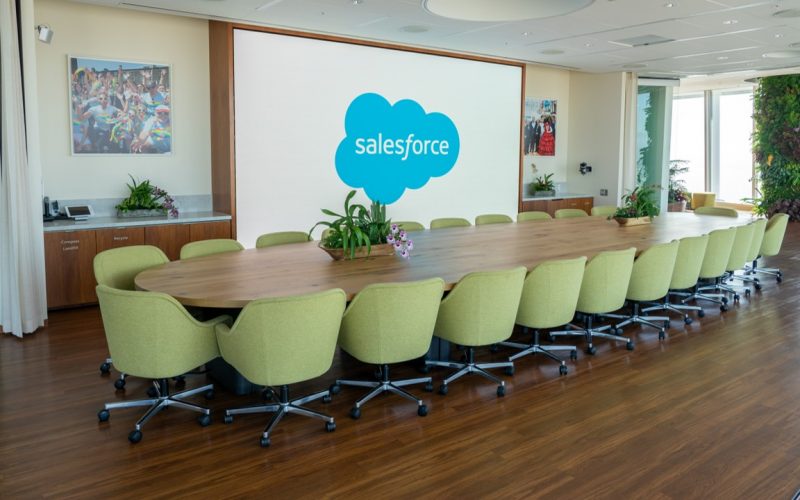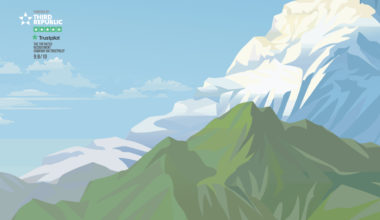Doina is a Certified Technical Architect. When she’s not masterminding ground-breaking Salesforce solutions to meet the dreams of her clients, she enjoys hiking, running, a good dinner, or a relaxed meet-up with friends. As one of the Certified Technical Architect elite, she shares her top tips for conquering the CTA review board.
It was 2012 and I had secured my dream job as a Technical Architect for Salesforce. At the time, I was 6x certified and at the top of my game. But I wanted more. I wanted to be the best Salesforce professional I could be. I wanted to get to the very top of the pyramid and become a Certified Technical Architect (CTA) — for me, the emphasis being on the “certified” part!
I already knew a lot, but I had so much more to learn. I was ready to start the intensive prep. I was very lucky to be a part of the internal Salesforce CTA training program. As part of that program, I was assigned a mentor, Dan Measures, one of the most knowledgeable CTA colleagues working in the Salesforce UK Services organization at the time.
Before I knew it, I was studying and well on my way. At the time, the Architect Journey looked a lot different to the pyramid of learning we have today.
But the one thing that has remained the same in terms of difficulty and complexity is the infamous Review Board exam — where you’re provided with a complex hypothetical scenario with detailed customer requirements and asked to synthesize the information, design an optimal architecture solution, and present and justify your recommended solution in front of a panel of judges.
For all of you looking to embark on your journey to CTA (or for those who are already on the path), here are my top four tips for approaching the final test.
Tip 1: Study, study, and study some more
It was hard — I mean, really hard! At that time, the only documentation available was scattered in different places (not the amazing structure that Trailhead and the Architect Journey trailmixes give us today). I was very grateful to my Salesforce colleagues who had collated and shared lists of links and documents.
I studied relentlessly. In the evenings, weekends, whenever I could find a bit of time between tasks. A glutton for punishment, I was also taking an Executive MBA class so I juggled class, homework, and exams all at once… it was really intense, to say the least (but so worth it in the end, I must say!).
Tip 2: Do hypothetical scenarios under real test conditions
My mentor, Dan, assigned me hypothetical scenarios and we did mock presentation sessions together. In order for it to be as realistic as possible, I’d start looking at the scenario an hour or an hour-and-a-half before the presentation session. This way, I experienced the same pressure of understanding the scenario and preparing the solution within the same time constraints that I would have during the CTA review board. I didn’t check any information sources but only noted areas where I felt I was missing information while solving the scenario.
I then presented whatever I prepared in the limited time and Dan would ask questions, provide feedback, and make recommendations. The first sessions were total failures in terms of how I managed to organize myself. In terms of solutions, I got things mostly right in terms of solutions but missed in areas like Single Sign On (SSO) flows, Communities and Mobile, which were my weaknesses at the time.
Tip 3: Don’t be a perfectionist! Manage your time.
During my hypothetical scenarios, I was too much of a perfectionist and tried to go into every single detail of my solutions. I tried to create perfect, customer-facing slides for the models and to answer each requirement — which made me run out of time very quickly.
Finding that balance and cadence that allowed me to create and present the solution within the allocated time was one of my biggest challenges. And I really struggled to find my style throughout the first half of my learning journey. But I gradually improved my presentation style (there’s a badge for that now!) and things were on track. I started passing the mock scenario sessions, was learning loads, and felt quite positive overall. Everything was looking good — I could do this!
Tip 4: Life goes on regardless, be prepared for personal setbacks
Whenever Dan was not able to hold a study session with me (he had his own life too!), another CTA colleague, Dennis Thong, would step up to help me.
But life is not always easy… or predictable, and I soon found myself faced with a personal challenge. A month before my review board exam, my dad fell down the stairs and broke a vertebra while visiting me. In retrospect, it’s interesting how the stressful, emotional situation impacted my professional performance. It was not all that surprising that I failed the next two hypotheticals. I was not focused enough, my head was not fully in the game.
With my best interest in mind, Dennis was concerned that I was putting too much pressure on myself and asked me if I would prefer to reschedule the board for a later date. I really appreciated both his tremendous help with the scenarios, as well as his concern for my overall well-being. But I was really determined to succeed, so, I didn’t delay, I actually became even more determined to pass.
Tip 5: On the day, every minute is precious
I went off to New York for the big event. I met with Dennis the day before and we did a couple more mock scenarios. He was always tough but kind, honest, and pointed out each opportunity for improvement.
As the day came, I was nervous but confident. I knew I was prepared and all-in to do my absolute best. I used my experience from the many mock scenarios I’d completed and created several slides for the main diagrams of the solution. I added tiny but ugly handwritten notes (I was a perfectionist only with the solution, no longer with my notes!) on the margins of the technical solution for every requirement. I finished my preparation in exactly the time allocated and was ready to present.
Time passes extremely quickly in a review board! I knew every minute was precious so, I didn’t waste any of them and spoke about all the solution components. I finished with two minutes to spare. What a relief!
I went into the Q&A section feeling positive. I listened to each question with an open mind and answered to the best of my ability. The judges changed the scenario a couple of times, challenged me, asked me questions that required me to detail parts of my solution, and even gave me the chance to update my data model. While updating your solution is allowed, one has to be aware of all the effects even a tiny change can have on the overall solution!
The entire exercise took around five hours. I was exhausted… but quietly confident I’d done a good job.


